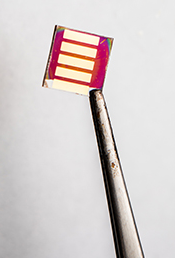Engineers work on solar skin
 Queensland researchers are working on solar power technology that can be used as a flexible ‘skin’ over hard surfaces.
Queensland researchers are working on solar power technology that can be used as a flexible ‘skin’ over hard surfaces.
University of Queensland researchers have set a world record for the conversion of solar energy to electricity via the use of tiny nanoparticles called ‘quantum dots’, which pass electrons between one another and generate electrical current when exposed to solar energy in a solar cell device.
Professor Lianzhou Wang, who led the discovery, said conventional solar technologies used rigid, expensive materials.
“The new class of quantum dots the University has developed are flexible and printable,” he said.
“This opens up a huge range of potential applications, including the possibility to use it as a transparent skin to power cars, planes, homes and wearable technology.
“Eventually it could play a major part in meeting the United Nations’ goal to increase the share of renewable energy in the global energy mix.”
Professor Wang’s team set the world record for quantum dot solar cell efficiency by developing a unique surface engineering strategy.
Overcoming previous challenges around the fact that the surface of quantum dots tend to be rough and unstable – making them less efficient at converting solar into electrical current.
“This new generation of quantum dots is compatible with more affordable and large-scale printable technologies,” Professor Wang said.
“The near 25 per cent improvement in efficiency we have achieved over the previous world record is important.
“It is effectively the difference between quantum dot solar cell technology being an exciting ‘prospect’ and being commercially viable.”







 Print
Print